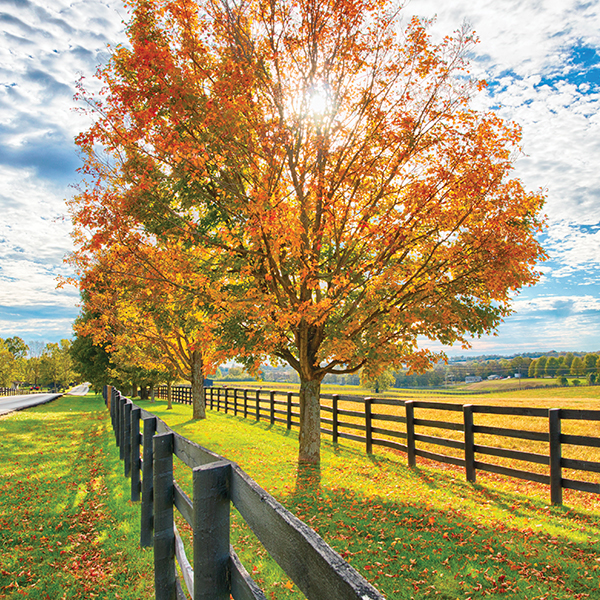By Kyla Szemplinski, MS and Chris Cooper, PhD When the summer heat finally decides to wind down, it will a great time for horse owners to evaluate their pastures. Late summer and early fall are a great time of the year to reseed pastures, depending on what kind of grasses horse owners have in their fields (cool-season or warm-season).
If you are unaware of what kind of grasses you have in your field, look to see when the grasses start to turn brown as the temperature starts to drop. Cool season grasses like Kentucky bluegrass, Timothy, Tall Fescue, Ryegrass, Wheat and Orchardgrass will start to turn green and grow while warm season grasses like Crabgrass, Bermuda, Foxtail and Bahia will start to turn brown.
For Tall Fescue, Orchardgrass and Timothy, the optimum time to reseed is August 15th-
October 1st. Other cool season grasses like Rye and annual Ryegrass, the optimum time is August 15th-October 15th and Wheat can be reseeded starting in September until mid-November. Warm season grasses are best to reseed in late spring or early summer as temperatures go back up.
Another concern for equine owners in fall pasture management is the nutrient content,
especially non-structural carbohydrates (NSC). NSC content is dependent on what type of
pasture grasses horse owners have. Horse owners further south and west in Tennessee, Mississippi, Alabama, and Georgia, are more likely to have warm season grasses while horse owners further north or east, in Kentucky and Arkansas, might have more cool season grasses.
Typically, cool season grasses will have higher NSC content than warm season grasses. This is due to cool season grasses being able to store fructan in the leaf vacuoles of the plant while warm season grasses store starch in the chloroplasts of the leaves. Additionally, cool season grasses do not have the ability to limit fructan accumulation while warm season grasses do once the plant becomes saturated.
It is no secret that metabolic issues, such as obesity, insulin sensitivity and pasture based
laminitis is linked to higher NSC intake. Concerned horse owners with more cool season grass pastures should consider limiting their horses pasture turnout to early in the morning or nighttime if they are concerned about NSC overload since NSC is the highest in the afternoon. Owners with more warm season grasses in their pastures generally do not have to worry about NSC overload since those grasses will be going dormant and can self-limit when they have excess sugar.
Fall is also another good time to spray perennial weeds with herbicides. As temperatures
drop, it is also a good time to reapply fertilizer. Another application of nitrogen (40-50 pounds)
in September is fine but remember to let some rain wash the fertilizer off grass before turning
horses back out.
Besides grass management, horse owners should also consider fence maintenance. Horse
owners should walk their entire fence lines and see what areas need to be upgraded/repaired in addition to possible tree limb removal. These upgrades should be done as soon as possible before winter temperatures roll in and daylight becomes less.
Water sources (automatic and troughs) should also be inspected. Owners should check to see if the pipes for automatic sources are well insulated for below freezing temps, water trough heaters (along with outdoor extension cords) and heated buckets function as well. Outdoor water troughs should be moved under covered shelter if possible, be inspected for any cracks and can safely hold a trough heater. If any of these items need to be upgraded/replaced, horse owners should do so at once.
Any further questions about late summer/fall pasture management, please do not hesitate
to contact your county’s Extension office. UT TSU Shelby County Extension can be reached at 901-752-1207 during normal business hours Monday through Friday 8am-4:30pm.









